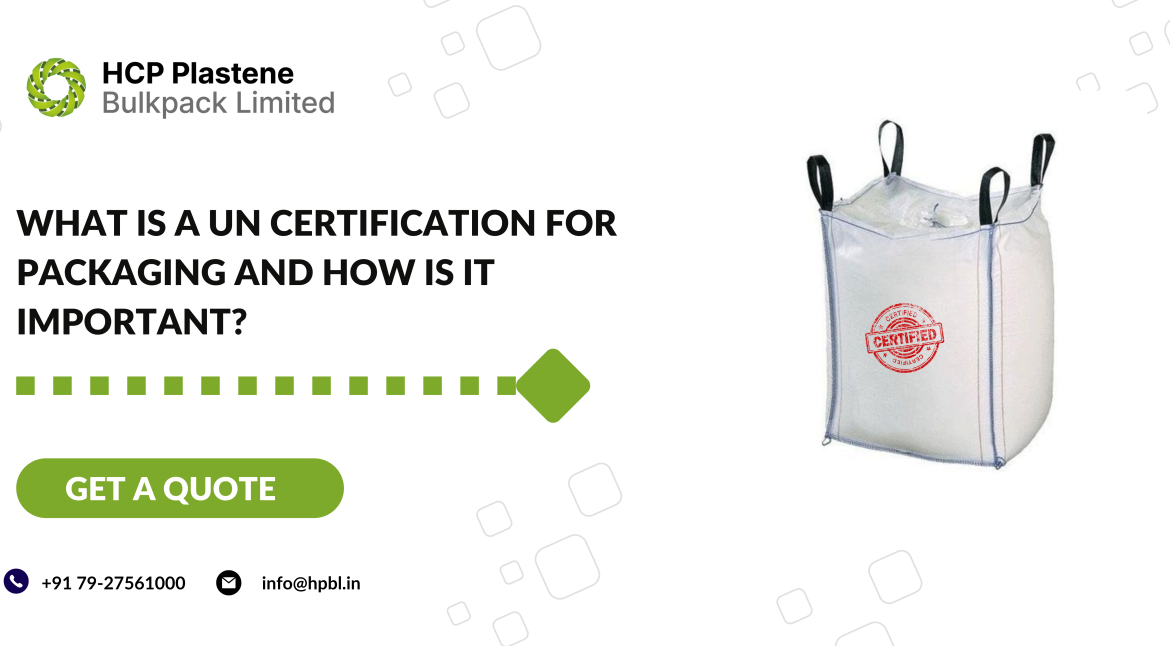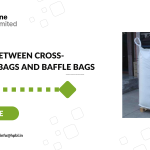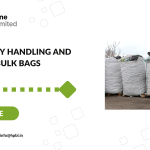Transporting products safely is crucial in today’s global economy, particularly when handling and transferring hazardous commodities. The UN certification for packaging is essential for FIBC companies in India and abroad to guarantee the safe containment and long-distance, cross-border transportation of hazardous materials. UN certification is an essential protection that shields communities, workers, and the environment from the possible hazards connected with transferring hazardous materials. For HPBL and its clients, using UN-certified packaging is vital—not only for legal compliance but also for preventing accidents that could lead to serious repercussions when shipping chemicals, batteries, or other hazardous items.
What Is UN-Certified Packaging?
Bulk bags that have passed FIBC testing methods for UN certification are referred to as UN-certified packaging. To put it another way, these containers satisfy the strict performance and safety requirements set by the UN for the transportation of hazardous materials. The UN Recommendations on the Transport of Dangerous Goods – Model Regulations, which form the foundation of several global agreements controlling the transportation of hazardous chemicals by air, sea, rail, and road, contain these requirements. UN certification is primarily intended to guarantee that packaging can endure transportation stresses without endangering the security of the hazardous materials it contains.
Importance of UN certification
For HPBL and its clients, adhering to UN packaging rules is critical. Failure to adhere to UN packaging rules might have serious repercussions. Businesses risk heavy penalties, delayed shipments, or even prohibitions on shipping specific items. Furthermore, utilizing non-certified packaging raises the possibility of mishaps that might cause harm to the environment, injuries, or even death. which could have negative effects on one’s reputation and legal standing. Some of the reasons why UN certification for packaging is important are:
Global Standardization:
UN certification offers a widely accepted standard for packaging hazardous materials, promoting global trade, and guaranteeing uniform safety precautions across country boundaries.
Accident Prevention:
Properly approved packing greatly lowers the possibility of spills, leaks, or other mishaps during transit, safeguarding the environment and workers equally.
Legal Compliance:
When exporting hazardous materials, it often becomes necessary by law to use UN-certified packaging. Serious consequences, such as fines and shipping limitations, may follow noncompliance.
Risk Mitigation:
Shippers and carriers may be held less liable when hazardous items are transported thanks to certified packaging.
Important UN Packaging Specifications & Requirements
To guarantee that it can securely store hazardous materials, UN-certified packaging must adhere to strict guidelines and pass a number of tests. Depending on the kind and degree of risk that the material may pose, different standards apply. The following are some essential elements of UN packaging requirements:
Construction and Materials
A variety of materials may be used to create UN-certified packaging, such as Metal (aluminum, steel), Flexible or stiff plastic, Fiberboard, Wood, and Composite materials. The type of material used is determined by the amount of protection needed and the nature of the hazardous materials. For example, metal drums may be used to package flammable liquids. whereas plastic or specifically lined metal containers may be used for corrosive compounds.
Performance tests
Packaging of FIBC bulk bags must pass some efficiency tests that mimic the circumstances it can experience during transit in order to receive UN certification. HPBL’s FIBC packaging undergoes rigorous performance tests designed to simulate transport conditions and verify safety. These include:
Drop Test:
To make sure a package can sustain impact without leakage, it is dropped onto a hard surface at different heights.
Stacking Test:
To replicate storage and transportation situations, containers are put under stacking pressure.
The hydrostatic pressure test :
This verifies that the packaging for liquid containers can sustain internal pressure without leaking.
Vibration Test:
To replicate the circumstances of shipping, packages are shaken.
Leak-proof-ness test:
This makes sure that, even under typical handling circumstances, the package doesn’t leak.
By adhering to UN certification standards, HPBL provides clients with FIBC solutions that meet international safety and performance requirements for hazardous material transport. For small and large businesses alike, choosing HPBL’s UN-certified FIBCs offers peace of mind. knowing that their packaging solutions not only comply with global regulations but also prioritize safety and reliability.










